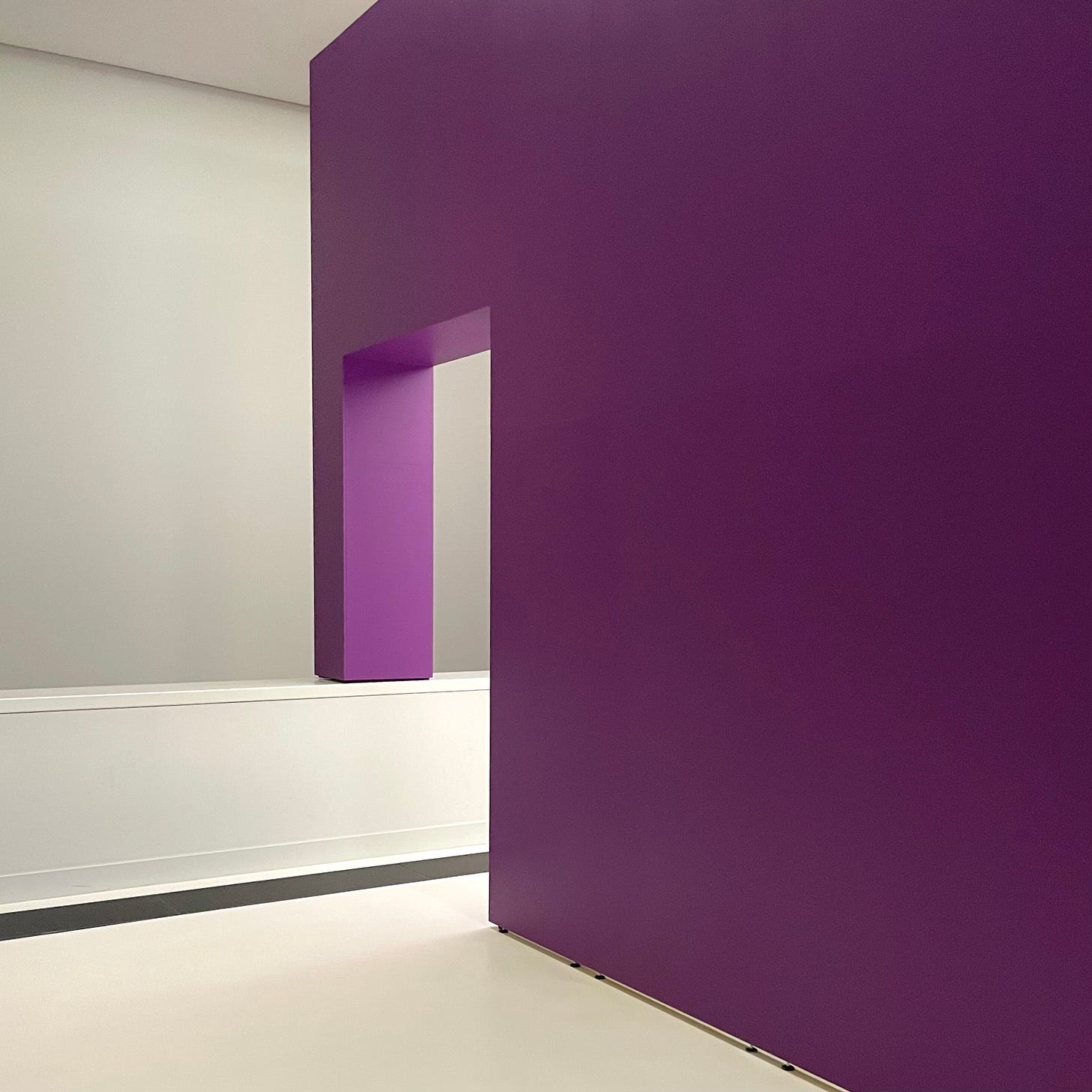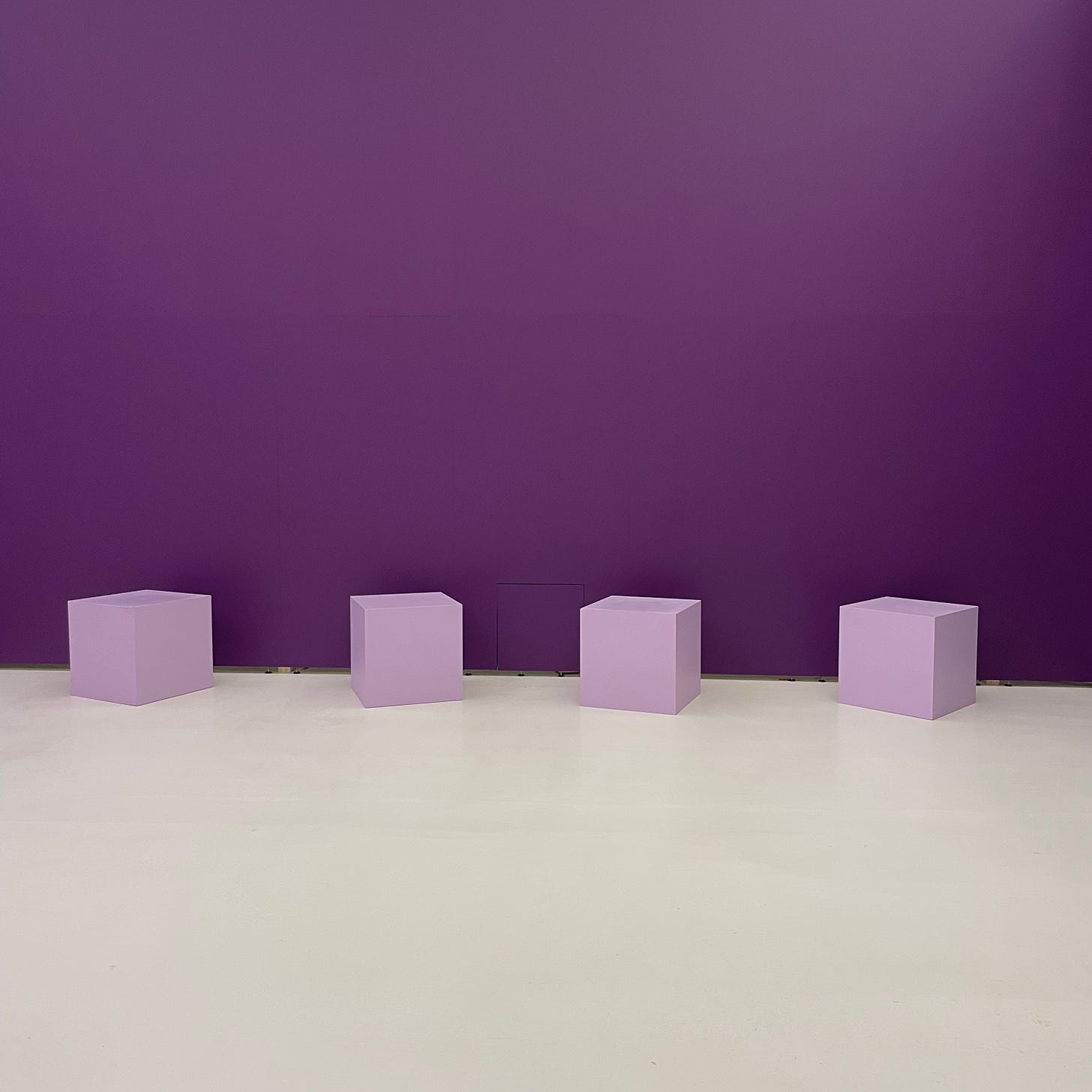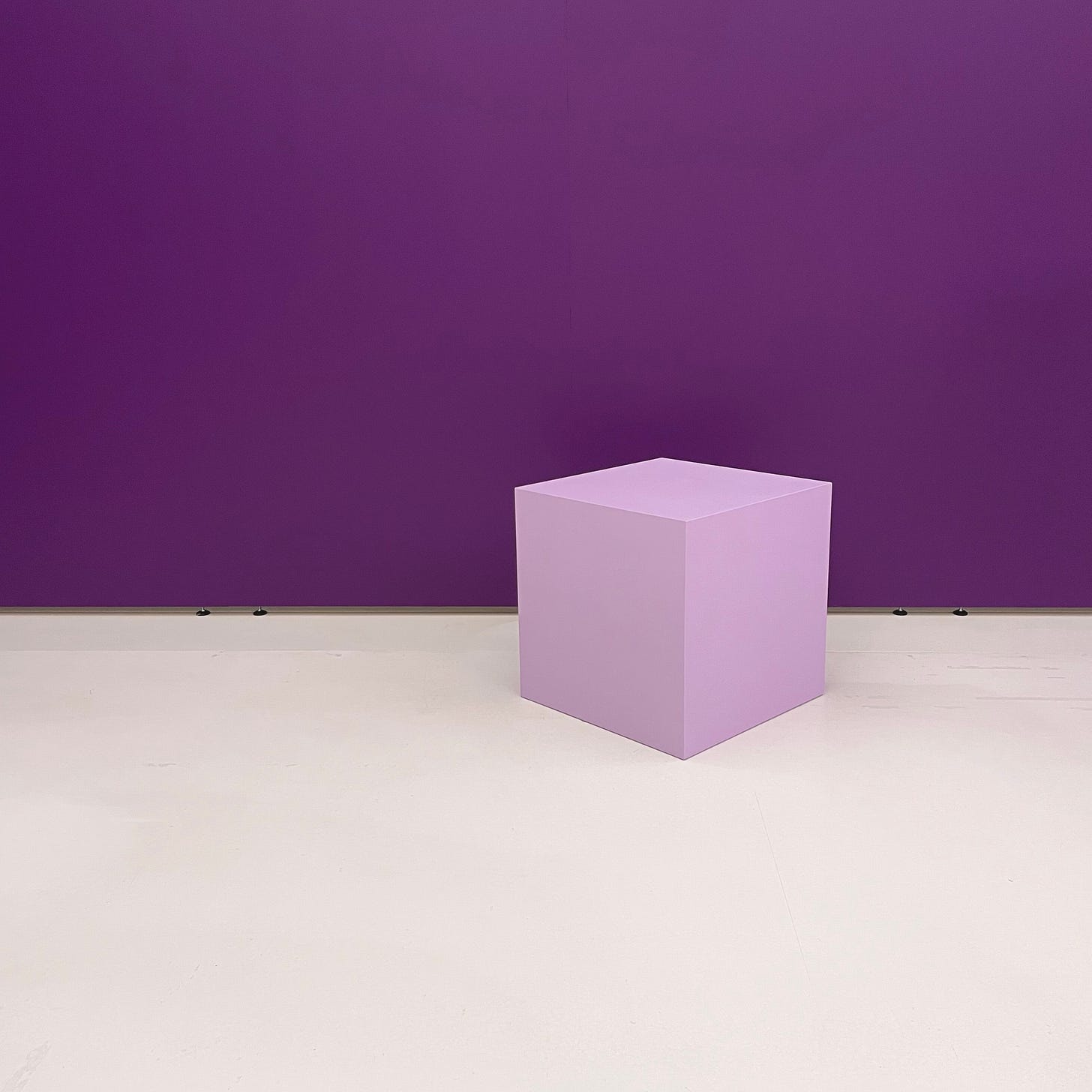What's Your Angkor Wat?
disconnect 017/237
[2 March 2025]
-----------------------

Over the last few months, I have noted many ideas for filming in Berlin. Although I haven’t finished 40 Nights in Toronto, I couldn’t wait any longer—on a snowy Thursday two weeks ago, I had to go out and begin executing my ideas.
After half a year without filming a walking video, I had forgotten how much presence it takes to film a long one-take. I kept worrying about making the wrong move, messing it up.
But what does messing up a one-take video that lives from its close-to-real-life-ness even mean? Maybe ‘messing up’ contributes to its uniqueness? Maybe there is no such thing as messing it up?
As I was filming, about to enter an elevator on the empty second floor of Boulevard Berlin, I bumped into a guy who exited backwards, pushing a shopping cart full of laundry, not seeing me. There were three elevators next to each other, and I hesitated, unsure which one to take, only noticing his at the last moment.
This happened during the first of two takes I filmed that evening. During the second, two mall staff members approached me as I walked through the same floor—shops permanently closed or entirely empty—asking if they could help me. Again, I hesitated, not sure what to do, briefly stopped, and answered that I was just walking downstairs. I kept filming for about a minute, thinking about how this pause might have messed up my video, and eventually decided to stop recording.
Earlier that day, I visited the Asian Art Museum at the Humboldt Forum and brought my Canon Legria FS306 camcorder. This camcorder has sentimental value. I used it to film the visuals for Hydro, my first audiovisual project, in Lisbon. When I think back to filming it, I remember waking up before sunrise, heading to the Miradouro do Jardim do Torel, climbing a fence because the park was still closed, and capturing the peaceful, empty plaza along with the stunning view over the city. Being there, all by myself, gave me a sense of presence, of aliveness.

I had never been to the Humboldt Forum before. The enormous building amazed me. I rode up the long escalators, looking down at the ambient architecture. There were very few visitors on a Thursday at 11 AM. I was immersed in my own world and absorbed into another at the same time.
On the third floor, where the Asian Art Museum is located, marble statues of German 16th-century royalty lined the corridor. Their presence, combined with the modern minimalistic architecture, made me feel like stepping into a vaporwave world. The setting was so calm, so surreal. I started filming long, still shots of the empty escalators, the corridor, the statues.
Inside the museum, one of the most interesting things I saw was a roughly 3x3m wooden 3D model of Angkor Wat, along with descriptions of how Europeans had discovered it.
Angkor Wat was constructed in the 12th and 13th centuries and discovered by Europeans in the mid-19th century, who then became almost obsessed with this otherworldly architectural masterpiece. The French even built a life-sized model of part of the temple in Paris for the 1931 Colonial Exposition. What will people rediscover 800 years from now that was built in our lifetime? Or will this hyperconnected world prevent that kind of rediscovery from ever happening again?
But what fascinated me most weren’t the exhibits themselves—it was two rooms.
After walking through the first few museum rooms, I entered a large one that didn’t look too different from the others—except for one thing. The glass cases and wooden shelves were empty. Some had signs attached that read: Hier entsteht etwas Neues für Sie—we are building something new for you here.
Later, after spending about two hours in the museum, I left the room showcasing the Angkor Wat model and found myself in a short corridor, facing a perfectly plain purple wall with an opening in it, without a door. I stopped, admired the liminality of the space, and curiously walked toward the opening.

I entered purple paradise.
It was another temporarily empty room, not displaying any art from the exhibition. White floors, deep purple walls, and eight soft pastel purple, cube-shaped stools. Walking through that doorway felt like stepping through a portal into a video game. Discovering this room so unexpectedly, being totally immersed in its otherworldliness, gave me an idea of how Europeans might have felt when they discovered Angkor Wat.
When was the last time you discovered something unexpectedly—and it left you in awe?
Enjoy your day (or night).
glg Soda Paapi
PS: If you have any feedback, I’m curious to hear it!
-----------------------
Did you enjoy what you read?
Join The Soda Club and receive a new episode of disconnect every other Sunday.
What are You waiting for?
Thank you for joining The Soda Club.
Check your inbox — a welcome email is on its way.
What's Your Angkor Wat?
disconnect 017/237
[2 March 2025]
-----------------------

Over the last few months, I have noted many ideas for filming in Berlin. Although I haven’t finished 40 Nights in Toronto, I couldn’t wait any longer—on a snowy Thursday two weeks ago, I had to go out and begin executing my ideas.
After half a year without filming a walking video, I had forgotten how much presence it takes to film a long one-take. I kept worrying about making the wrong move, messing it up.
But what does messing up a one-take video that lives from its close-to-real-life-ness even mean? Maybe ‘messing up’ contributes to its uniqueness? Maybe there is no such thing as messing it up?
As I was filming, about to enter an elevator on the empty second floor of Boulevard Berlin, I bumped into a guy who exited backwards, pushing a shopping cart full of laundry, not seeing me. There were three elevators next to each other, and I hesitated, unsure which one to take, only noticing his at the last moment.
This happened during the first of two takes I filmed that evening. During the second, two mall staff members approached me as I walked through the same floor—shops permanently closed or entirely empty—asking if they could help me. Again, I hesitated, not sure what to do, briefly stopped, and answered that I was just walking downstairs. I kept filming for about a minute, thinking about how this pause might have messed up my video, and eventually decided to stop recording.
Earlier that day, I visited the Asian Art Museum at the Humboldt Forum and brought my Canon Legria FS306 camcorder. This camcorder has sentimental value. I used it to film the visuals for Hydro, my first audiovisual project, in Lisbon. When I think back to filming it, I remember waking up before sunrise, heading to the Miradouro do Jardim do Torel, climbing a fence because the park was still closed, and capturing the peaceful, empty plaza along with the stunning view over the city. Being there, all by myself, gave me a sense of presence, of aliveness.

I had never been to the Humboldt Forum before. The enormous building amazed me. I rode up the long escalators, looking down at the ambient architecture. There were very few visitors on a Thursday at 11 AM. I was immersed in my own world and absorbed into another at the same time.
On the third floor, where the Asian Art Museum is located, marble statues of German 16th-century royalty lined the corridor. Their presence, combined with the modern minimalistic architecture, made me feel like stepping into a vaporwave world. The setting was so calm, so surreal. I started filming long, still shots of the empty escalators, the corridor, the statues.
Inside the museum, one of the most interesting things I saw was a roughly 3x3m wooden 3D model of Angkor Wat, along with descriptions of how Europeans had discovered it.
Angkor Wat was constructed in the 12th and 13th centuries and discovered by Europeans in the mid-19th century, who then became almost obsessed with this otherworldly architectural masterpiece. The French even built a life-sized model of part of the temple in Paris for the 1931 Colonial Exposition. What will people rediscover 800 years from now that was built in our lifetime? Or will this hyperconnected world prevent that kind of rediscovery from ever happening again?
But what fascinated me most weren’t the exhibits themselves—it was two rooms.
After walking through the first few museum rooms, I entered a large one that didn’t look too different from the others—except for one thing. The glass cases and wooden shelves were empty. Some had signs attached that read: Hier entsteht etwas Neues für Sie—we are building something new for you here.
Later, after spending about two hours in the museum, I left the room showcasing the Angkor Wat model and found myself in a short corridor, facing a perfectly plain purple wall with an opening in it, without a door. I stopped, admired the liminality of the space, and curiously walked toward the opening.

I entered purple paradise.
It was another temporarily empty room, not displaying any art from the exhibition. White floors, deep purple walls, and eight soft pastel purple, cube-shaped stools. Walking through that doorway felt like stepping through a portal into a video game. Discovering this room so unexpectedly, being totally immersed in its otherworldliness, gave me an idea of how Europeans might have felt when they discovered Angkor Wat.
When was the last time you discovered something unexpectedly—and it left you in awe?
Enjoy your day (or night).
glg Soda Paapi
PS: If you have any feedback, I’m curious to hear it!
-----------------------
Did you enjoy what you read?
Join The Soda Club and receive a new episode of disconnect every other Sunday.
What are You waiting for?
Thank you for joining The Soda Club.
Check your inbox — a welcome email is on its way.